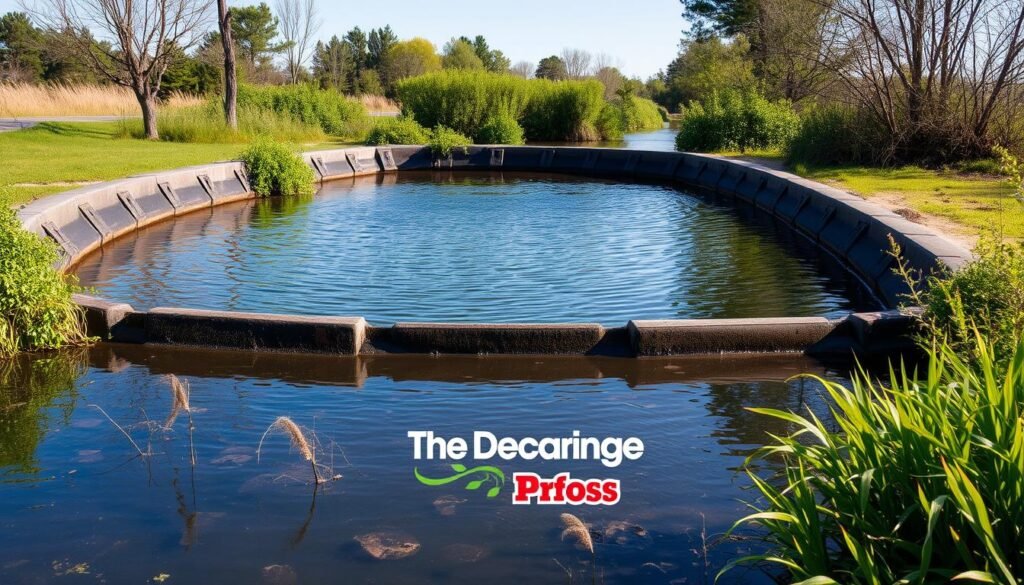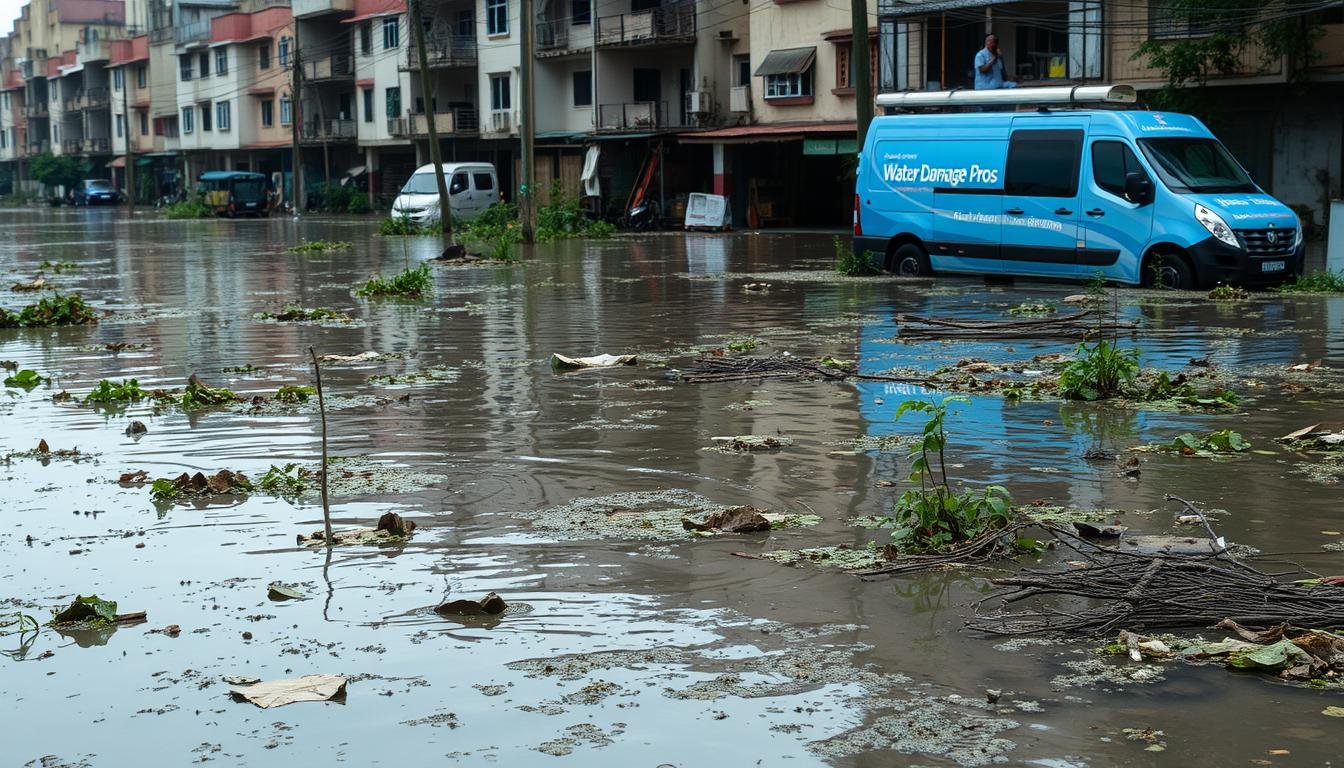Floodwater can carry harmful substances like downed power lines and waste from animals and factories. It also has coal ash waste with harmful compounds. These can cause serious health problems1. Being exposed to floodwater can lead to infections, skin issues, and even rare diseases like Leptospirosis and Melioidosis, especially near the Gulf Coast1.
It’s vital to prepare well, assess the situation, and treat the water properly. This ensures the water is safe after a flood.
Key Takeaways
- Floodwater can contain a mix of hazardous substances, including bacteria, viruses, and chemicals from various sources.
- Exposure to contaminated floodwater can lead to serious health issues, such as wound infections, skin rashes, and gastrointestinal illnesses.
- Immediately wash any affected areas with soap and clean water, and seek medical attention if signs of infection develop.
- Avoid contact with floodwater, especially for children, and disinfect any toys or items that have been exposed.
- Take precautions against electrical, chemical, and animal hazards in the aftermath of a flood.
Preparing for Flood Water Contamination
Before a flood, securing your water and chemical supplies is key to avoid environmental harm. Secure water and chemical storage by moving chemicals like chlorine and fluoride to safe spots2. Fill water tanks to the top to keep them from floating away2. Also, disconnect and seal chlorine containers to stop them from moving2.
Protecting Water Sources
Protect your water sources by getting your wells and springs ready. Make sure well casings are high enough and caps are sealed well2. Also, keep the area around wells dry to prevent water from getting in3.
Check springs for damage and the area for erosion or debris2. Look for cracks or leaks in cisterns and fix them to keep water clean2.
By doing these things, you can greatly lower the chance of environmental contamination. This makes sure your flood preparedness is strong for your private water systems243.

Responding to Flood Water Contamination
Assessing Water Source Impact
If a water supply has been flooded, the first step is to check for damage or contamination5. For wells, look for cracks or debris. Springs should be checked for damage and changes in water flow. Cisterns need to be examined for leaks or sediment.
If you see any damage, assume the water is not safe. Use a different water source until tests confirm it’s safe.
Securing and Testing Water Sources
If the water source is damaged, cover it to prevent more contamination. Then, test the water through a certified lab for bacteria and chemicals5. Test for coliform bacteria and E.coli to check for disease-causing pathogens5.
Chemical testing for nitrates might be needed if the water source is near septic systems or sewage5.
Flood waters can carry harmful bacteria and viruses5. Exposure can lead to infections, rashes, and other illnesses5. If you get a wound from floodwater, see a doctor for a tetanus shot if needed5.
Eating or drinking contaminated water can cause diarrheal diseases5.
| Flood Water Contamination Risks | Impact |
|---|---|
| Fast-moving floodwater | |
| Bacterial and viral contamination |
|
Assessing flood water contamination, inspecting visually, testing water quality, and protecting sources are key. By securing and testing water sources, you can keep your water safe. This protects you from health risks from flood water.
Treating Contaminated Water Sources
When flood waters contaminate water sources, we have several ways to make the water safe. Boiling water for 1-3 minutes can kill harmful germs. But, it doesn’t get rid of chemicals7. Chlorine or iodine tablets can quickly disinfect water. Yet, they don’t remove chemicals8.
Shock chlorination is a method that uses unscented bleach to disinfect wells and springs7. For cisterns, you might need to drain, clean, and disinfect the system8. If you think there’s chemical contamination, you might need water treatment devices to remove it7.
| Water Disinfection Method | Effectiveness |
|---|---|
| Boiling | Kills pathogens, but does not address chemical contamination |
| Chlorine/Iodine Tablets | Disinfects water, but does not remove chemical contaminants |
| Shock Chlorination | Effective for disinfecting wells and springs |
| Water Treatment Devices | Can remove specific chemical contaminants |
It’s important to figure out how bad the contamination is. Then, choose the right water disinfection methods to make the water safe7. Talking to local authorities or water treatment experts can help you decide what to do8.
Conclusion
Handling flood water contamination well needs a full plan. This includes getting ready, checking, and fixing water sources. It’s important to act fast and fix any contamination problems right away9.
Even when the crisis is over, it’s crucial to keep your water safe. Private water system owners must stay alert and take steps to prevent future contamination10. By following the best practices for preventing contamination and keeping your water system in good shape, you can make sure your water is safe for drinking for a long time.
Flood water contamination can be tough to deal with, but this article gives you a clear plan. By focusing on your family’s and community’s safety, you can come out of this situation stronger. You’ll be more committed to taking care of your local water resources.
FAQ
What are the common contaminants found in flood waters?
How can flood events impact private water systems like wells, springs, and cisterns?
What steps should be taken to prepare water and chemical supplies before a flood?
How should private water sources be prepared to minimize the risk of damage or contamination?
What are the initial steps to assess if a water supply has been impacted by a flood?
What water quality testing is recommended for flood-impacted water sources?
What methods can be used to disinfect and treat contaminated water sources?
Source Links
- https://www.cdc.gov/floods/safety/floodwater-after-a-disaster-or-emergency-safety.html
- https://www.ci.patterson.ca.us/488/What-To-Do-Before-During-and-After-a-Flo
- https://pinellas.gov/safety-tips-before-during-and-after-a-flood/
- https://www.ready.gov/floods
- https://dph.illinois.gov/topics-services/emergency-preparedness-response/flooding.html
- https://www.co.walton.fl.us/505/Flood-Waters
- https://doh.wa.gov/sites/default/files/legacy/Documents/Pubs//331-300.pdf
- https://www.idahopublichealth.com/environmental/drinkingwater/After-the-flood-protecting-your-drinking-water-fact-sheet.pdf
- https://www.epa.gov/sites/default/files/2014-08/documents/flood-related_cleaning_report.pdf
- https://www.raincoast.org/reports/flood/


